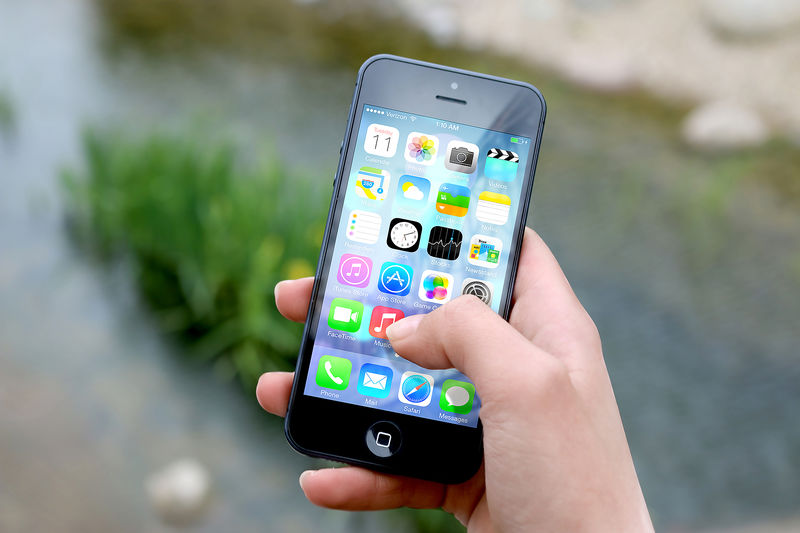Speeding Up the User Interface (UI)
The iOS interface that can be found on iPhones can be extremely quick to navigate. However, there are ways in which users can make it even faster. In order to speed up the UI, iPhone users need to go to Settings, select General, go to Accessibility, and turn on “Reduce Motion”. Turning this option on has the ability to stop the use of unnecessary animations on the iPhone. As a result, the UI speed will significantly increase as it is reducing space for other functions that may be more critical. Furthermore, these transitional effects do not service any technical purpose and the users will not have to experience any functional issues by turning this function off.
Clear Files and Apps that are Not Used
The amount of space that is available on a device also contributes to the speed of the phone. For instance, when the phone’s memory is nearly full, this can cause the device to have resource issues and thus slows down overall performance. To fix this, users are encouraged to go through the apps and files that are not used and removing them. Alternatively, saving them on a Cloud based storage network instead of on the phone itself serves the same purpose of clearing up phone space. This method offers one of the most convenient solutions for iPhone users to speed up their devices as many apps are not used frequently and hence removing them can serve to improve device performance.
Disabling Background Refresh
Many phone users enjoy being alerted right when there is a new notification. Although practical, this feature requires the device to constantly refresh in the background and thus consumes more RAM which is used to process activities. For example, almost all of the navigational related and email apps refresh in the background constantly to ensure that users are updated. To increase the speed of the phone with regards to background refreshes, users can disable the apps that automatically refresh in the background either in the app itself or through the settings tab. Alternatively, having only a few apps automatically refresh as opposed to disabling the notification of all apps can clear up processing space.
Clearing App Cache
Clearing up the cache of apps can be considered as another convenient option available to speed up the iPhone. In fact, clearing the cache can help users to free up a considerable amount of storage space as well. However, the option to clear cache is hidden in most of the apps, except for a few such as Safari. Therefore, users need to go to the iPhone settings and then wipe out the cache in Apple’s Game Center, Music, Podcasts, and other apps. A simpler way to clear the cache of the iPhone is to utilize mobile apps which are designed to increase the speed of the device such as Battery Doctor (free) which can remove the cache of the phone with a single click to significantly improve speeds.
Erasing Old Text Message Threads
Text message threads, especially the ones that contain multimedia content such as videos and images can weigh down the software of the device. Therefore, it is important to delete the old text threads that are no longer needed. While individual texts may contain very little data, the cumulative summation of all messages can significantly slow the device down. To delete all of the phone messages, users can automatically select which threads are no longer relevant to delete or download a third-party app which automatically deletes all the text messages after a certain duration to ensure that the device has sufficient free data.
Disabling Automatic App Downloads
Apps that automatically update themselves can lead to RAM shortages on the iPhone. As the apps need to constantly check if updates are available, this can cause lagging and slow performance as resources are being dedicated to this task. In order to turn off automatic app updates, users can go into the Settings, Tap on App and iTunes Stores, and under Automatic downloads they can toggle to the off button next to Updates. By doing so, users will not automatically have apps updated but instead will be prompted to do it themselves manually. Although manual, this is also simple as an option in the App Store allows for updating of all apps at once instead of periodically.
Restarting the Device
While many phone users tend to leave their device on for as long as possible, a healthy habit to pick up in order to increase the speed of the phone is to restart it once in a while. By periodically turning off the device, it will assist the phone is clearing up resource space that may be causing it to be slow. This method is extremely quick to do and offers a high degree of speed if the device has been on for long periods without a restart.
Downgrading Software Versions
Previously, it was said that keeping up to date with the latest firmware could help to increase the speed of the iPhone. However, the opposite effect is also true. In the past, users have experienced slower devices as a result of updating software which was not as compatible with their device. To solve this, users are able to downgrade their current version to the last one which was running quicker. Although this takes more technical knowledge to do, many resources online can be accessed to start the process.
Through these various methods of altering the settings within the iPhone, a substantial amount of speed can be acquired for the device. While marginally effective individually, the combination of these methods can yield significant gains in the overall performance of the device. Most importantly, keeping the device updated with the latest software can serve as one of the biggest improvements to the speed of the device while keeping it on the latest security software.













